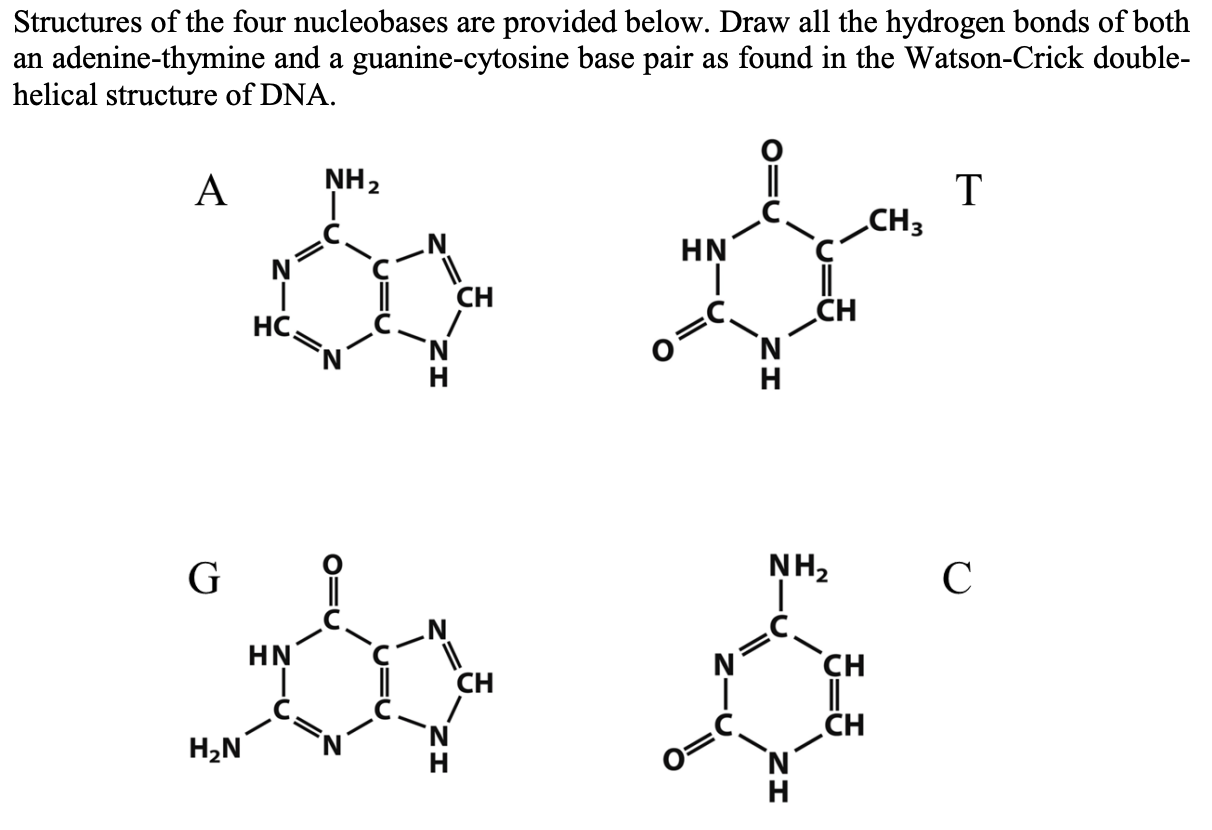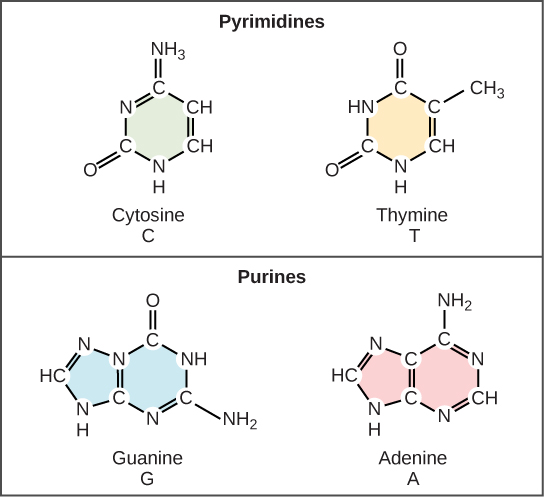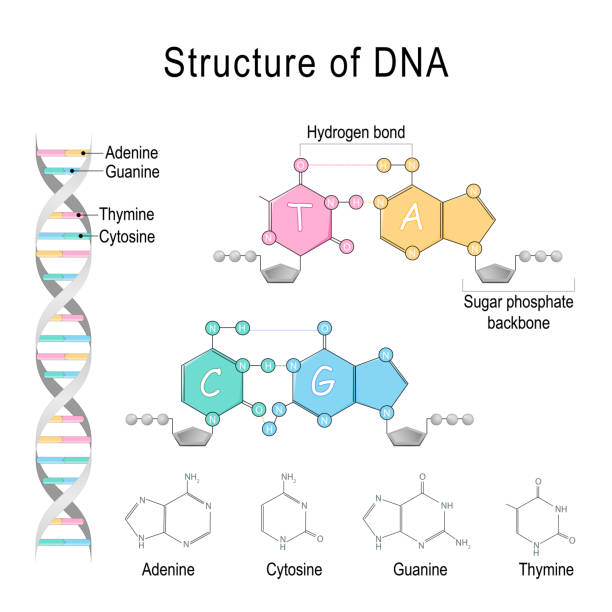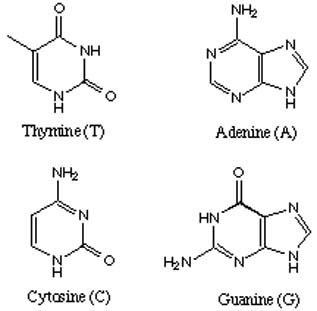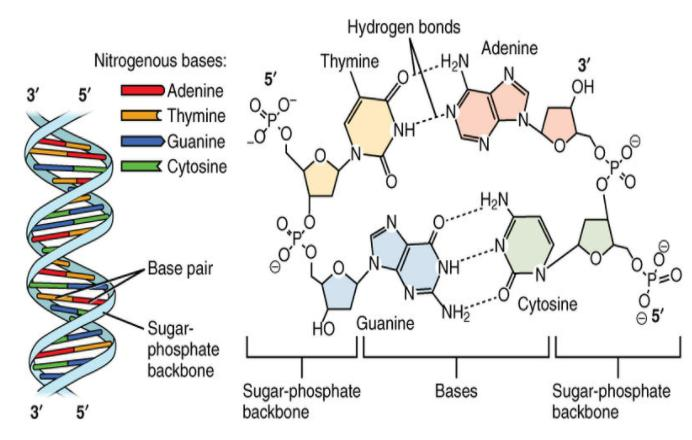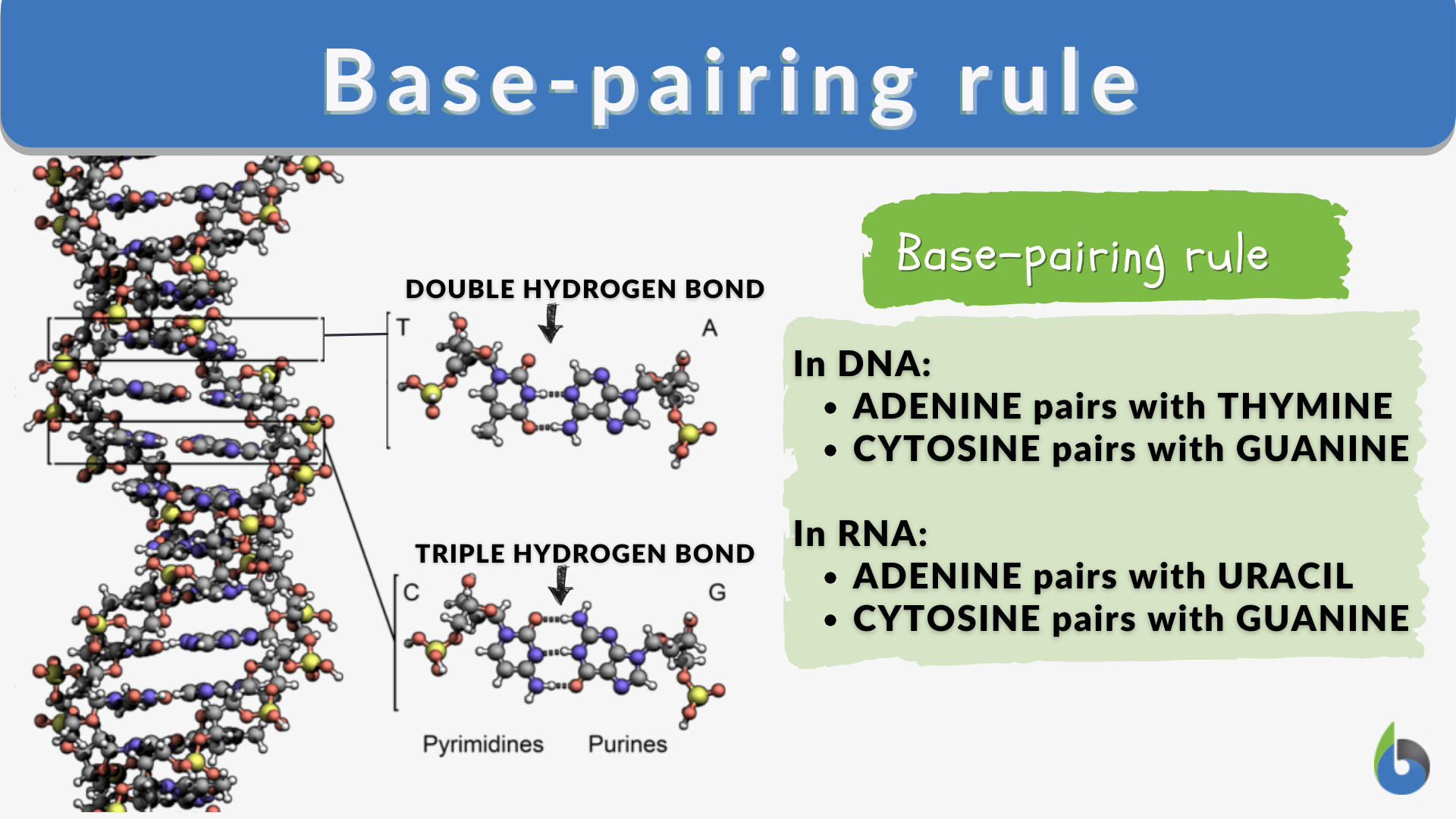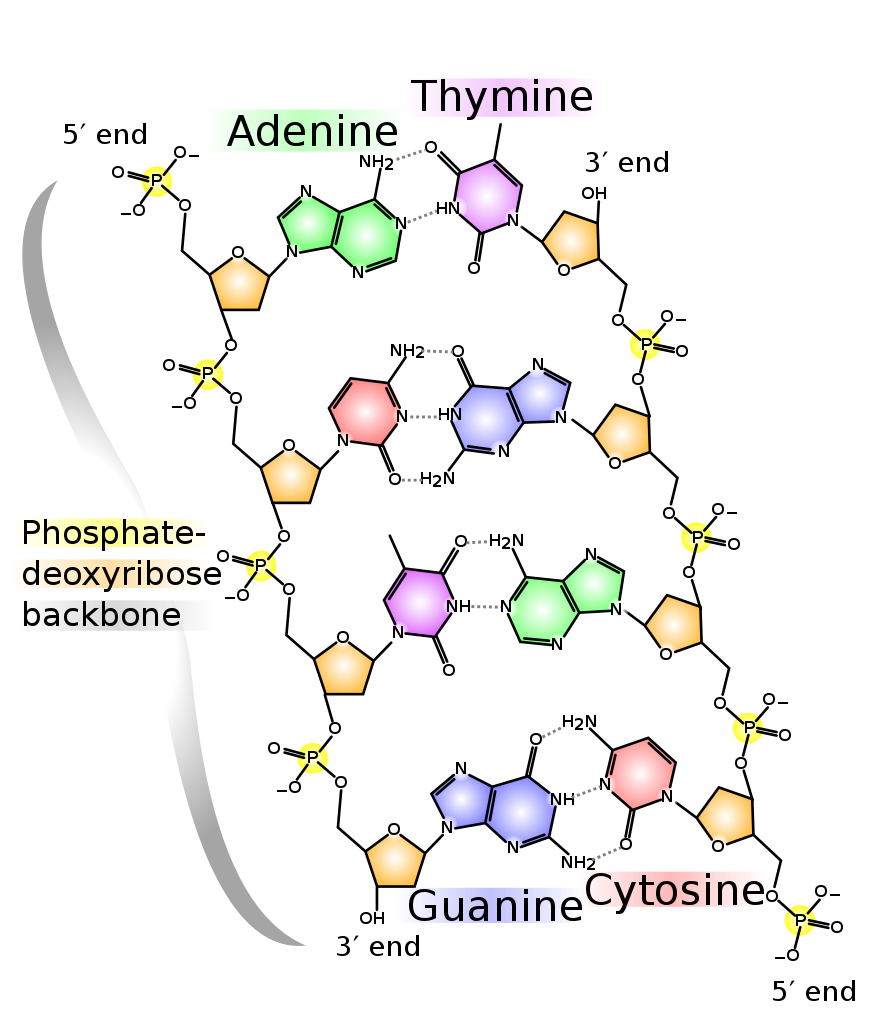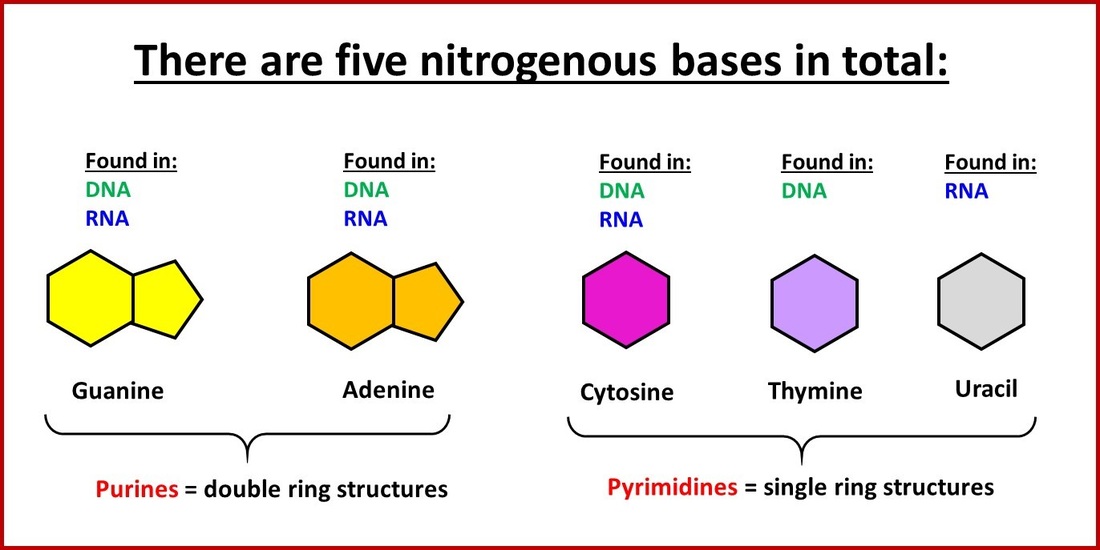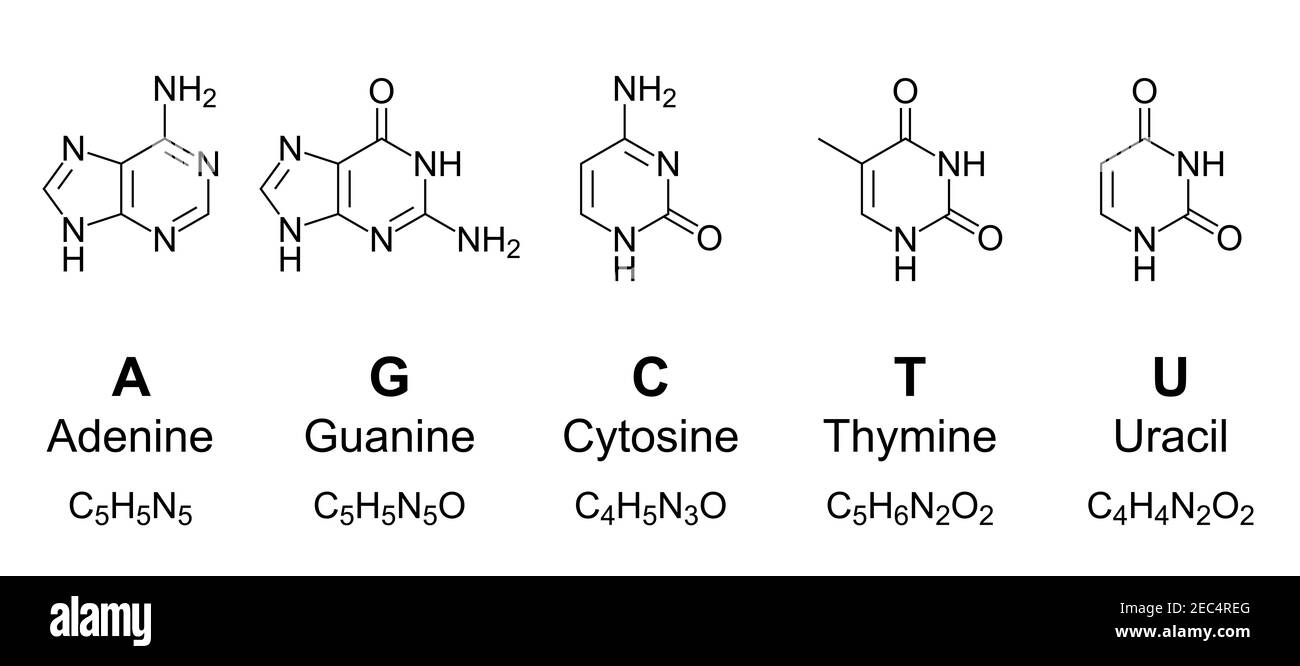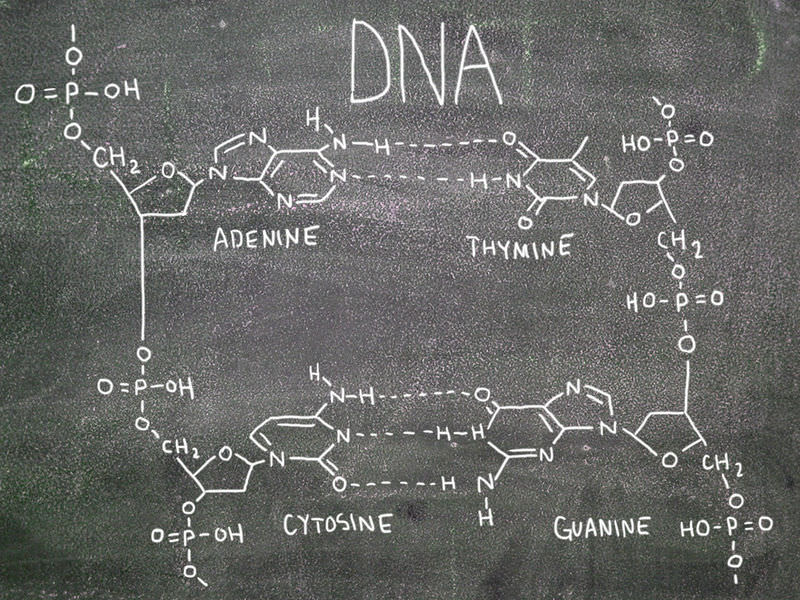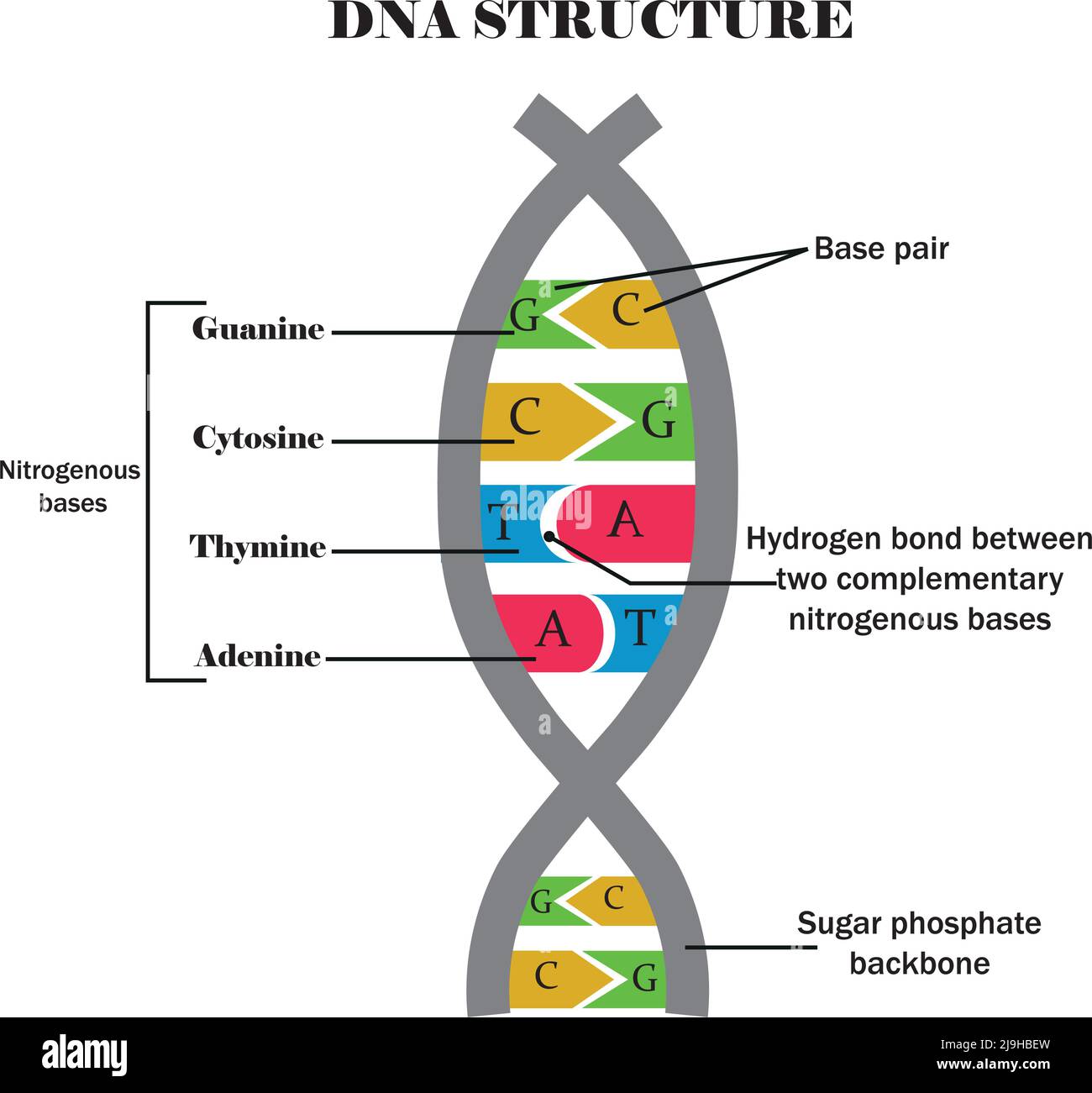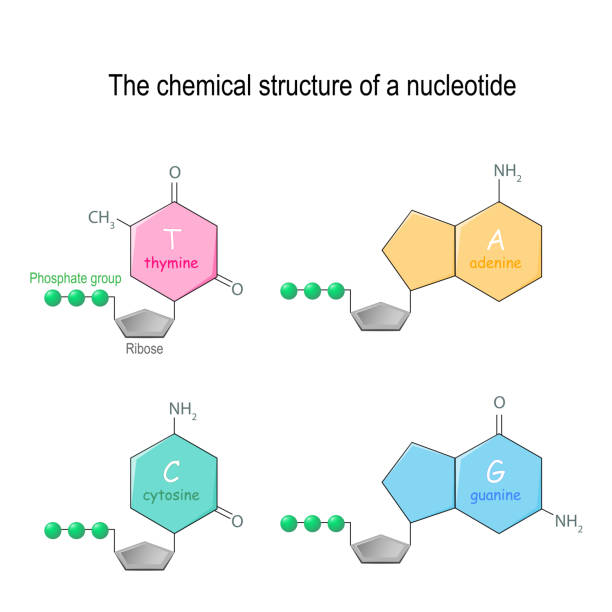
The Chemical Structure Of A Nucleotide Four Main Bases Found In Dna Adenine Cytosine Guanine And Thymine Phosphate Group And Ribose Stock Illustration - Download Image Now - iStock
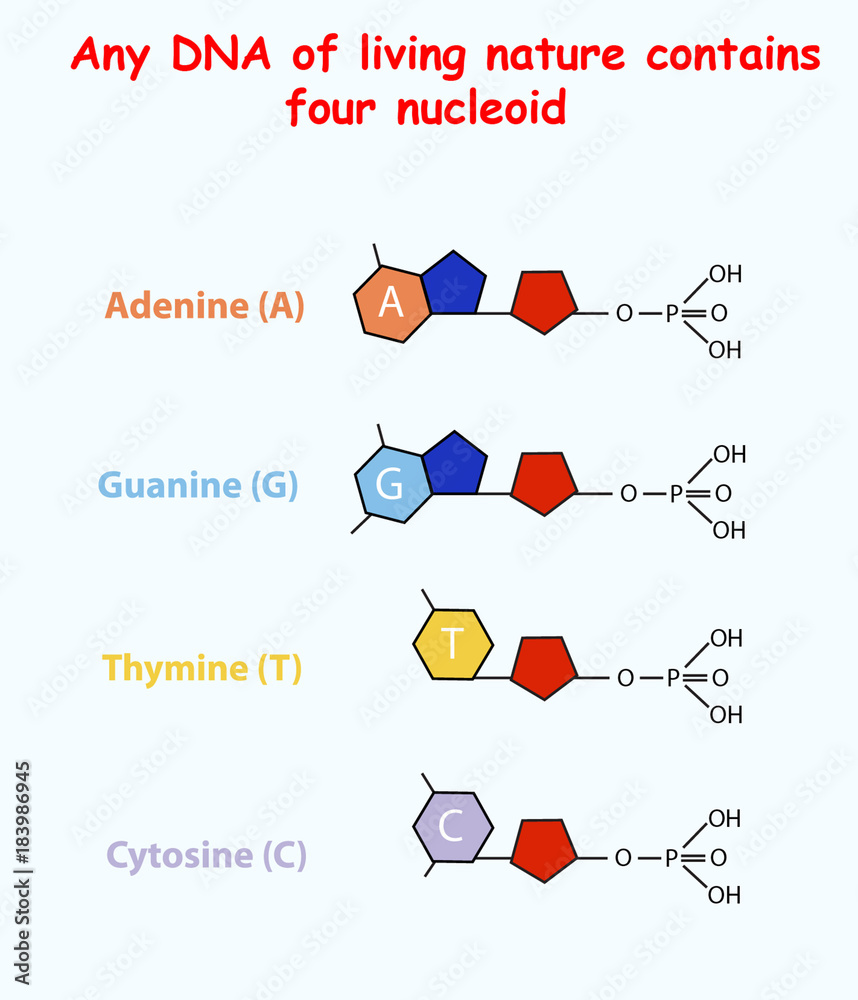
DNA of living nature contains four nucleoid. Adenine, guanine, thymine, cytosine. Vector info graphic. Education illustration. Stock Vector | Adobe Stock

According to chargaffs base pairing rules,the percentages of ___ are equal to those of thymine and - Brainly.com

DNA & GENETICS. There are four kinds of bases in DNA: adenine guanine cytosine thymine. - ppt download
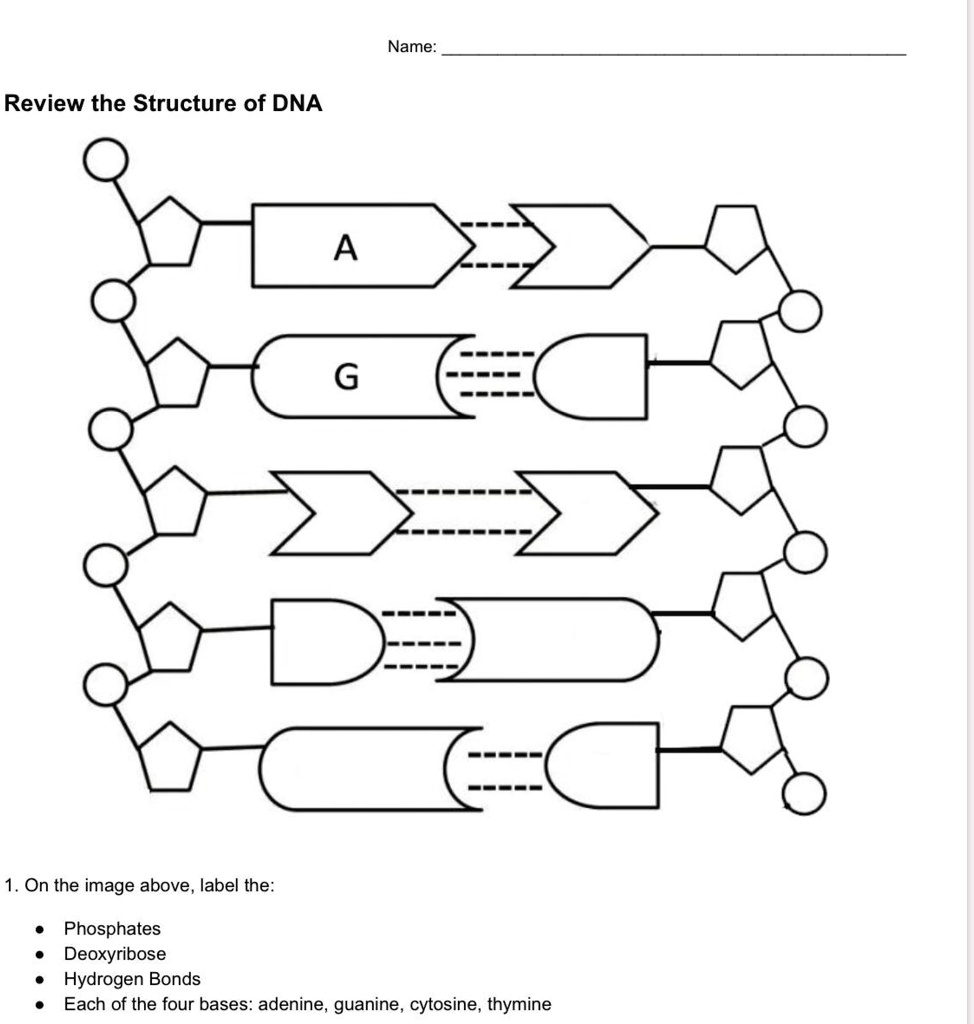
SOLVED: 'Can someone do this ASAP will give lots of points Name: Review the Structure of DNA A 1. On the image above, label the: Phosphates Deoxyribose Hydrogen Bonds Each of the

2 Elementary nitrogenous bases (adenine, guanine, cytosine, thymine) in... | Download Scientific Diagram

